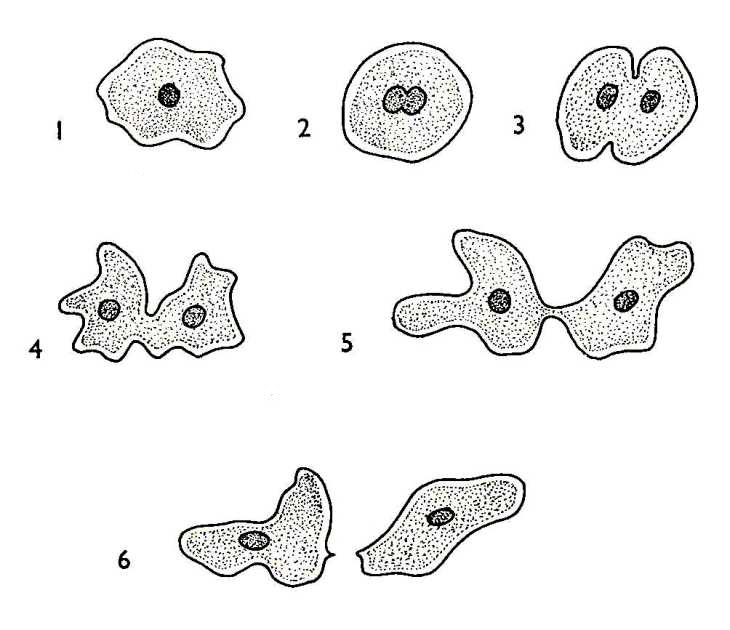Reproduction is the biological process by which new organisms known as the offsprings are produced by their parents. It is of two types: Sexual reproduction and Asexual reproduction. The difference between the two types lies in the number of parents required for both. In Sexual reproduction, two parents are required to give rise to the offspring. In asexual reproduction, a single parent can give rise to the offspring. Asexual reproduction is commonly seen in plants but is less common in the animal kingdom.
Suggested Videos
Asexual Reproduction
Types
Asexual reproduction seen in animals are of the following types:
-
Binary Fission
This method of reproduction is commonly used by bacteria and amoeba. In this type of reproduction, the DNA of the parent bacteria replicates itself and then the cell divides into two halves- each half having its own DNA. Therefore, the parent cell divides into two identical daughter cells. These daughter cells are identical to the parent cell.

Image Source: biology-resources
Browse more Topics under How Do Organisms Reproduce
- Introduction to Reproduction
- Reproduction in Human Beings
- Sexual Reproduction in Flowering Plants
-
Budding
In this type of asexual reproduction method, the offspring develops on the parent body from a bud -like structure. This is commonly seen in Echinodermata and hydra. Once big enough, the buds fall off the parent body and begin their independent existence.

Image Source: 00jesmor00288
-
Fragmentation
In this type of asexual mode of reproduction, the parent organism divides into multiple fragments or segments where each of the fragments develops into a new organism. Starfishes, who show sexual reproduction, also show this form of asexual reproduction where a part of its body such as its arm can give rise to an entirely new organism.

Image Source: edu.glogster
-
Parthenogenesis
In this kind of asexual reproduction, the female organism of the species produces egg without fertilization and the offsprings arise from that. Lizards, few insects and some fishes reproduce in this way. This type of reproduction is not seen in mammals. This kind of asexual reproduction is seen in both plants and animals.
Asexual reproduction seen in plants are of the following types:
-
Vegetative Propagation
This type of asexual reproduction occurs in stems of certain plants that give rise to new plants from certain buds that arise on their leaves or stems. Example of such propagation is seen in tubers, stolons, tubers, and leaves like the bryophyllum.

Image Source: sparknotes
-
Sporogenesis
This involves the development and propagation of spores which give rise to a new organism. Eg. fungi.

Image Source: meromicrobiology
Disadvantages of Asexual Reproduction
Asexual Reproduction requires only one parent, preferably female. Since there is no mixing of genes, the genetic material remains constant and maintains stability. Genetic variations cause the organism to become well equipped to adapt to any changes or mutations. An organism that arises from asexual reproduction cannot withstand any form of changes or disturbance in the environment. In sexual reproduction, the organism arising out of the union has better features and characteristics than the one who has the same characteristics as its parent.
Solved Example for You
Question: Which of the following is not an example of asexual reproduction?
- Budding in bryophyllum
- Spores of fungi
- Human baby
- Development of Strawberries
Solution: Option C Human Baby. Budding, sporogenesis, and development of strawberries occur by asexual methods. Human babies are a product of sexual reproduction.






Leave a Reply